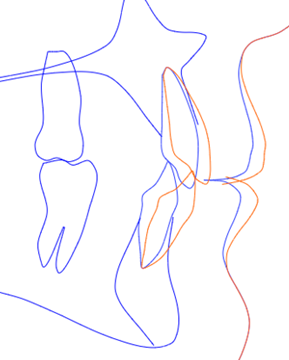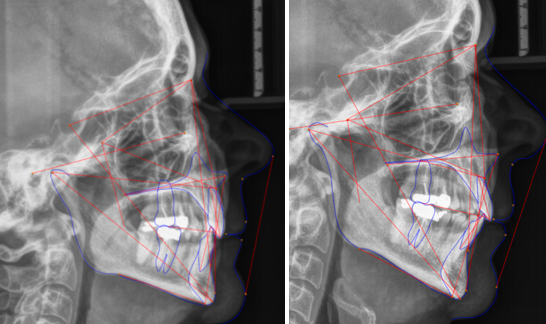As part of our Consultant Spotlight this week, learn how our POS Consultant and Instructor, Dr. Sam Channo, treats his own patient in Rochester Hills, Michigan.

My patient, Judy
Summary:
- 69 years old
- Issues with crowding
- Treated by non-extraction
- 15-month treatment
Judy always complained about how she was embarrassed when she smiled. She had a hard time chewing food and she could not keep her lower front teeth clean. Even the hygienist had a hard time cleaning her lower teeth. She had been focused on taking care of her family for so long and finally decided to take care of herself.
Evaluation & Diagnosis
Her evaluation showed that she was missing one lower incisor but still had about 7-8mm crowding, her vertical skeletal dimension was open (FMA=34) and she had a severe deep bite with retroclined upper incisors with mild Cl II on the right side.



Treatment Decision
Treatment options presented to patient:
- Add the missing lower incisor back with restoration and finishing Cl I.
- Finish with 3 lower incisors and mild Cl III cuspid.
 Virtual treatment objective of the treatment decision
Virtual treatment objective of the treatment decision
Treatment was planned to correct crowding and deep bite with 1-2 mm cuspid Cl III finish.
This approach makes a built-in tooth size discrepancy, with 6mm less tooth mass in the lower than the upper. A slight class III posterior finish (1-2 mm) will reduce the overjet that may be objectionable to the patient.
Deep bite is a problem when there is less tooth mass in the lower than the upper, since the lower incisors do not contact the cingulums of the upper incisors in the correct position. This is an accepted compromise.
Appliances were designed to fit Judy’s case goals and anatomy, expanded archwires on both arches were used to allow for expansion and to compliment the labial root torque (IP appliance) which was chosen for the incisors to better control incisor advancement.
Treatment started with standard wire progression until the end of treatment.
Case Outcome
Overall Judy’s treatment progressed very well, even though we worked during the start days of the pandemic, Judy was very pleased with the outcome. She was so happy that she started crying and hugged everyone in the office that day. She is more confident when she smiles now, she can also keep up with her oral hygiene. We were also able to create enough clearance for implant restorations on the upper right side.
She told me that orthodontic treatment changed her life.




